Keeping the temperature within the safe threshold is crucial for a CPU. It ensures maximum performance and extended life span of the silicone. In that venture, the air cooling technique has been around forever.
But what is it? And how is it done?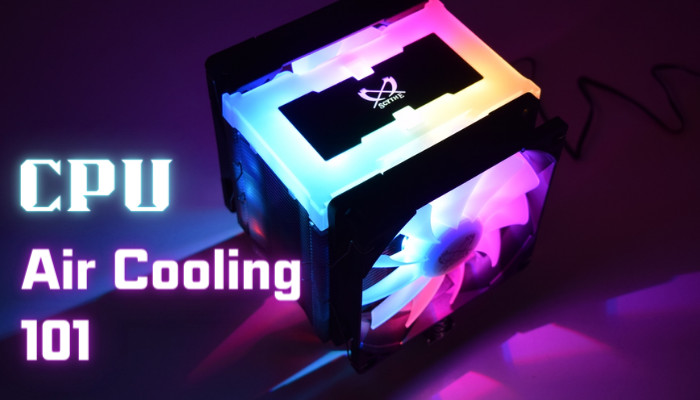
Well, in this article, we will delve into the nitty-gritty of this technology. So, saddle up!
What is CPU Air Cooling?
The process of cooling down the CPU to a manageable and harmless temperature via air is what we address as air cooling. Air coolers have been invented to alleviate this procedure. And it’s the core element when CPU air cooling is brought into the discussion.
So, what is it?
The CPU air cooler is the very component that is designed and destined to dissipate heat produced by the processor as it executes instructions. A conductive metal heat sink such as copper or aluminum and a fan are arranged efficiently to carry off surplus thermal energy from the CPU.
Similar to liquid cooling, where water flow takes away the heat from processors, air coolers do the same thing using airflow.
The air cooler rests on the motherboard’s socket via the correct bracket, contacting the CPU IHS (Integrated Heat Spreader).
You see, when the heat gets in the way, the CPU starts to choke while processing data. It’s known as Thermal Throttling. And when the processor reaches the maximum (Tj max) temperature, it shuts itself down to prevent any damage.
The air cooler, however, lowers the CPU temperature and makes sure the CPU reaches its highest potential.
That said, what exactly is inside this contraption that does all the magic? Well, let’s take a closer look at the CPU air cooler in the later section.
Essential Parts of an Air Cooler
An air cooler for the CPU comprises two major components— Heat Sink & Fan. This could be the whole story, but sadly it’s not. When peeping at the inside, the air cooling technology is far more advanced than it looks.
1. Heat Sink
Looking down on an air cooler, the heavy metal portion is known as the heat sink. As the name suggests, it sinks heat across the metal. We’ll see details on how it works later in this article.
Anyway, the heat sink is not just one element but a combination of several parts.
Cold Plate
Cold Plate directs to the bottom of the heat sink, where a metal square is found. It is also known as a cooler’s base plate. It directly touches the IHS of the CPU. Thermal paste is applied between the two surfaces. Physically, the cold plate surface is machined flat, smooth, and as even as it can be.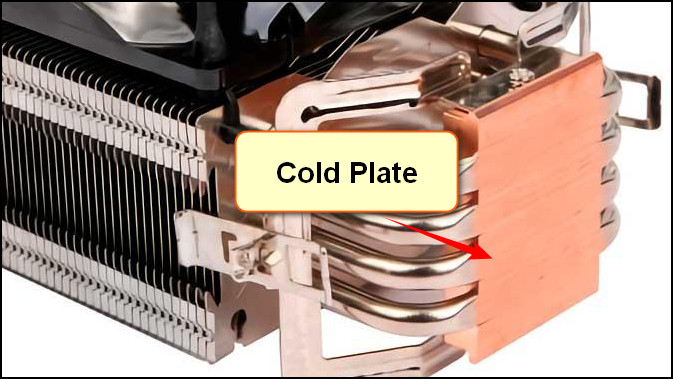
In the context of heat transfer from the CPU to the heat sink, the cold plate plays the most vital role, as it holds physical contact with the processor’s upper surface. This base plate is primarily made out of copper or aluminum due to its high thermal conductivity rating. These metals facilitate faster heat transfer in a given time and surface area.
Speaking of surface area, the cold plate covers the entire IHS by design. This way, heat can be transferred to the heat sink with maximum efficiency.
Heat Pipes
Through the base plate, some hollow cylindrical metal tubes from both sides go upward. Both ends of these tubes are sealed perfectly. These are known as the heat pipes of an air cooler.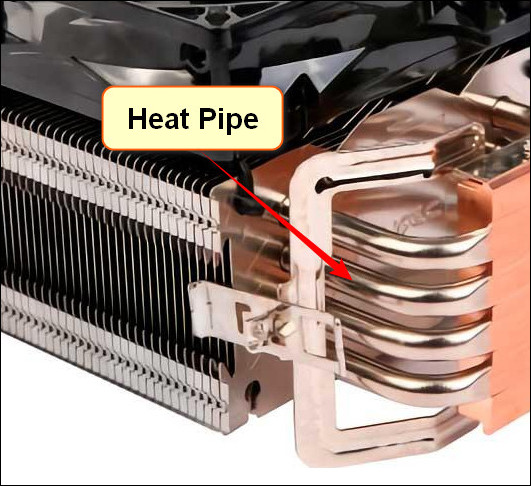
Each tube contains a fair amount of liquid. The liquid material, however, is called coolant. It can be a composition of Ammonium and Ethanol or Distilled Water.
Heat pipes are typically made of copper. The wall of each tube either has sintered copper dust or copper mesh weave. This helps the evaporated liquid inside the heat pipe to condense.
Sintering: It’s a process to create a solid mass of a material, especially metal, by applying heat and pressure without reaching a liquid form.
Fins
The fins of a heat sink are the vertically stacked thin copper or aluminum plates around the heat pipes with a large surface area. These are arranged in different numbers, sizes, and intervals.
Not every heat sink has a similar fin array. Rectangular, curvy, round, or wavy are some of the common patterns. Dissimilarities are often observed due to how coolers are designed.
The basic function of the fin stack of any heat sink is to disperse heat to the surrounding air. As the fins wrap around the heat pipes, they relieve the heat and spread across the large surface area. This increases the cooling capacity of a heat sink and the cooler as well.
2. Fan
Just like the heat sink, the fan is another crucial component of the CPU air cooler. Its function is simple; drive away heat from the fins. Not to mention fan type, efficiency in CFM, and noise level determine how well it will perform.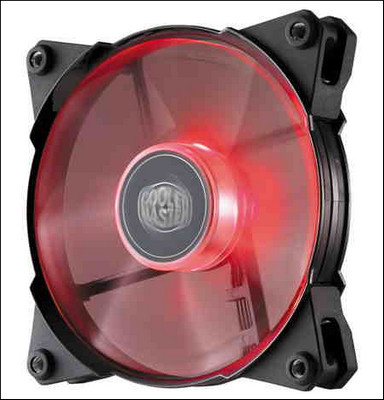
Nevertheless, an air cooler will still work without a fan, but dreadfully. Though, low TDP processors will fair a lot better.
How Does An Air Cooler Act On A CPU?
So far, we’ve looked at the internal parts of an air cooler. But how does an air cooler chill down a processor?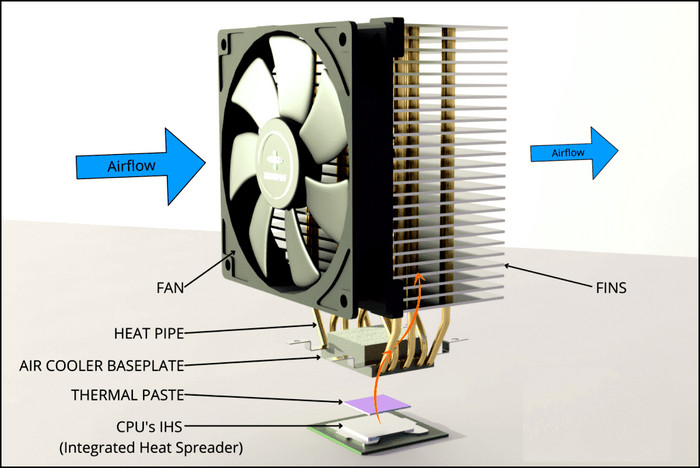
See, it’s already evident at this point that when the CPU is running under a heavy load, it generates heat. At first, the heat from the silicone cores transfers to the CPU’s IHS. The thermal compound between the IHS and the cooler passes the heat to the cold plate.
Now, as the tubes are in direct contact with the base plate, the liquid inside absorbs most of the heat. This is where the phase change of the liquid takes place. When the liquid engrosses enough energy in the form of heat, it turns into gas.
This gas then goes up the heat pipe, and at the point of fin contact, it starts to move heat to the fins and loses energy. Just when the fin stack receives heat, it instantaneously spreads it across the large surface of each layer. And finally, the fans push the heat into the ambient.
The hot gaseous coolant, however, cools down and condenses at the wall of the heat pipes thanks to sintered, grooved, and mesh weave copper. It then trickles down with capillary action to the cold plate again and absorbs heat. This entire process continues in a loop as long as the CPU operates.
With all this being said, an air cooler’s heat conductive capability is measured by the below equation.
Conductive heat transfer value q = kAdT/s
Where,
k = Thermal conductivity of the material.
A = Heat transfer area.
s = Material’s thickness.
dT = Temperature difference across the material.
So that’s how air cooling is done on a CPU. Different manufacturers innovate and improve their cooler designs, retaining the same principle.
With all these flawless calculations and designs, the air coolers can still be useless for lack of proper airflow through the PC case. And for your convenience, we’ve compiled a list containing the best airflow PC cases you can buy right now!
If you’ve made it this far, I bet you have a clear notion about CPU air cooling. But if you have more questions, let us know in the comments.
Have a nice day!




